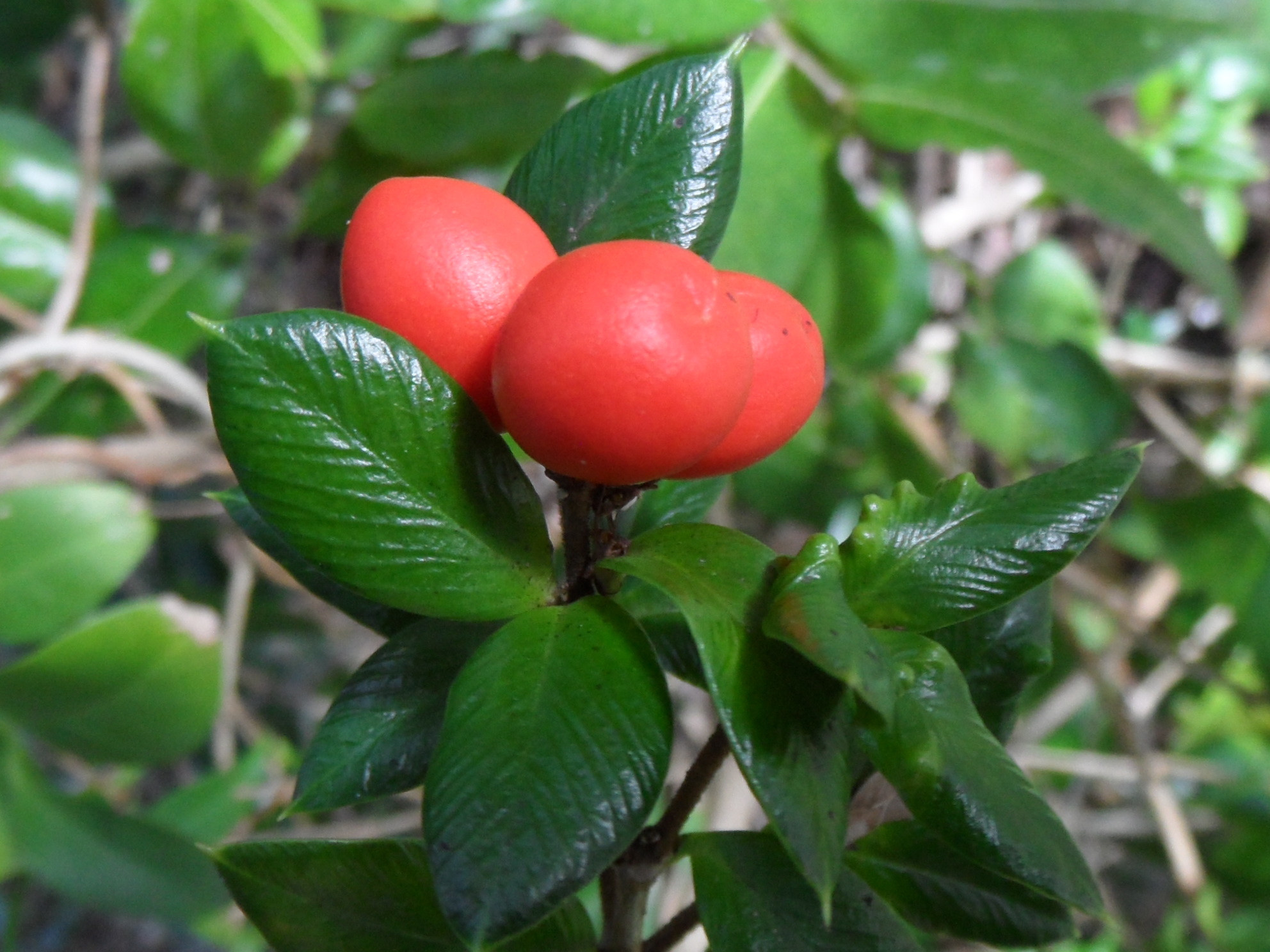
From the Greek halusis — a chain, alluding to the fruit.
Lianas, subshrubs or shrubs, evergreen; latex white. Stems woody, without spines. Leaves opposite or 3- or 4-whorled, stalked; blade well developed; colleters absent at base. Inflorescence axillary or pseudo-terminal, thyrsoid, cymose or paniculate. Flowers scented, sessile or stalked. Corolla salver-shaped; tube slightly swollen at stamen insertion; lobes convolute in bud, overlapping to the left. Corolline corona absent. Stamens enclosed, attached near top of tube, not sticking to style head. Disk absent. Fruit bead-like, with 1-several articles, each article globose to ellipsoid,1-seeded; seeds ovoid, globose or ellipsoid-globose, not winged, with a deep ventral groove, without hair tufts.
The genus is well known for A. ruscifolia, which is often grown by rainforest plant enthusiasts. Several other species are occasionally grown by specialist collectors.
Tolerant of mild frosts.
Seeds.
Prickly foliage, orange-red fruit in 1-several articles (chain).
Over 106 species in Asia, Malesia, Melanesia and Australia (8 species).
Forster (1992c, 1996a).
Source: (2002). Apocynaceae. In: . Horticultural Flora of South-eastern Australia. Volume 4. Flowering plants. Dicotyledons. Part 3. The identification of garden and cultivated plants. University of New South Wales Press.
